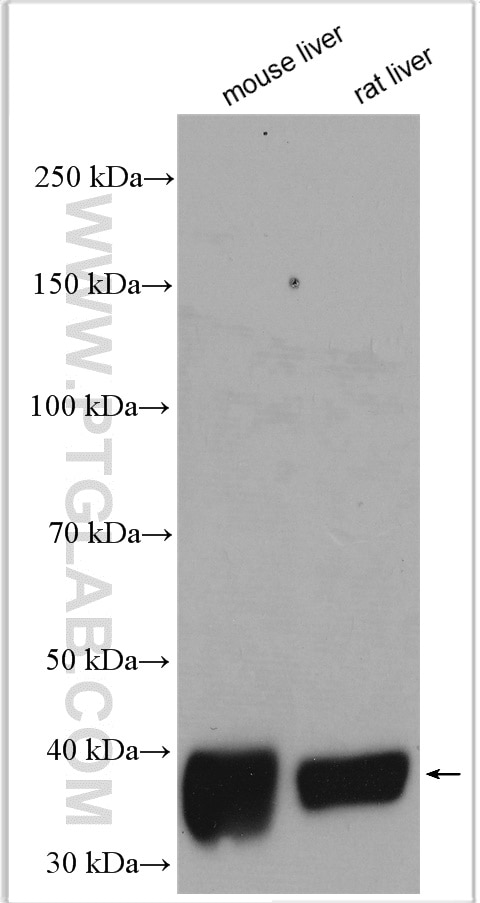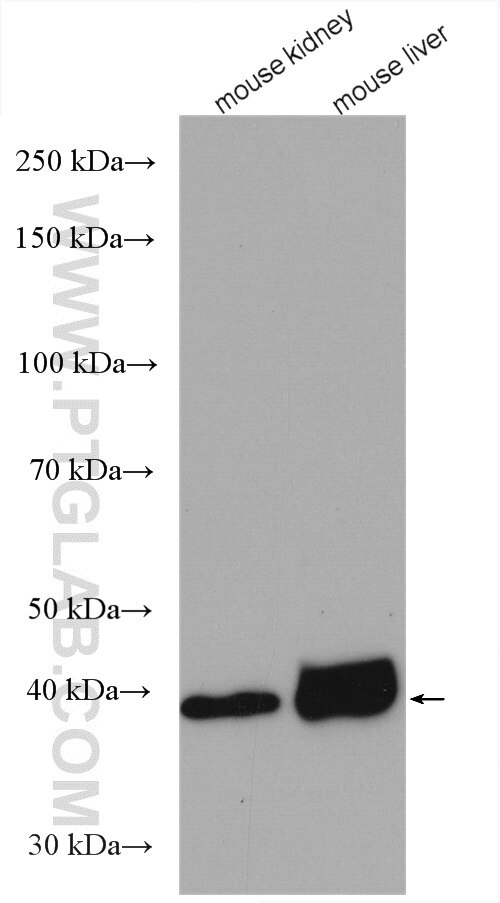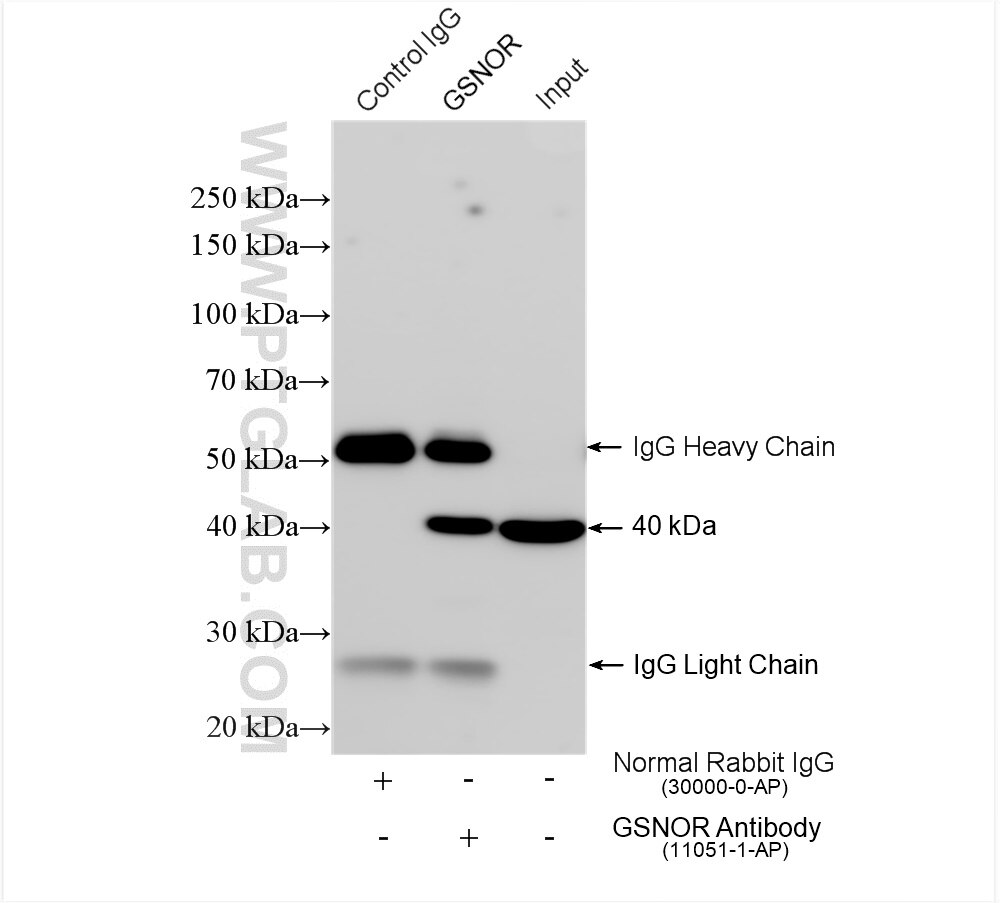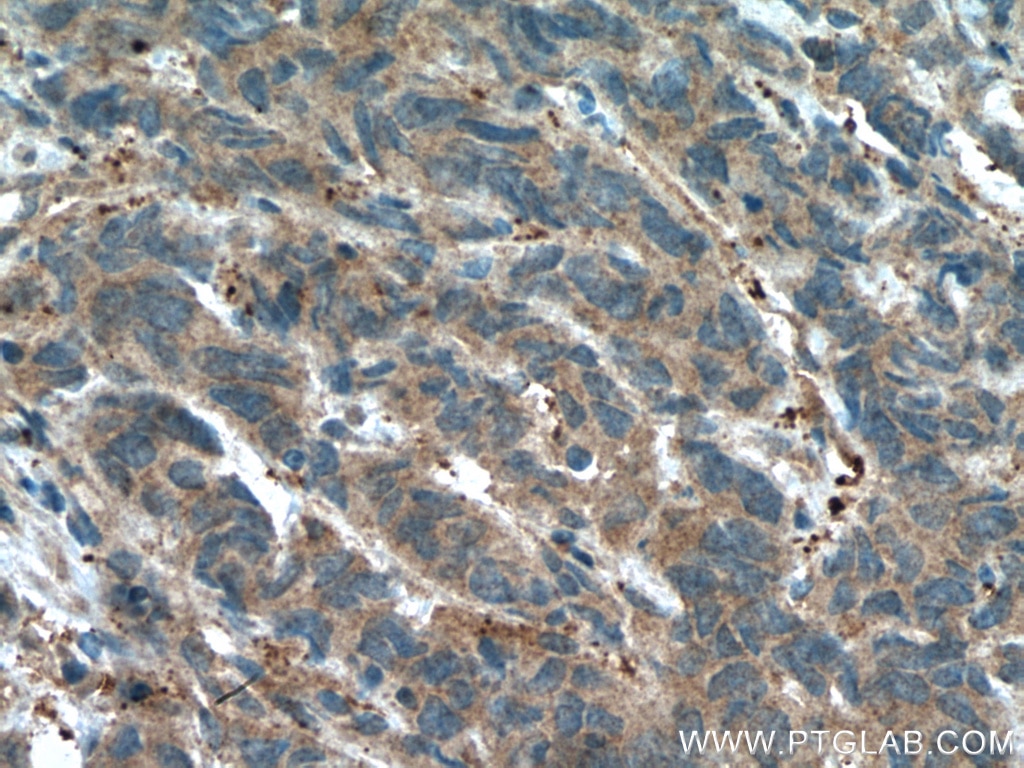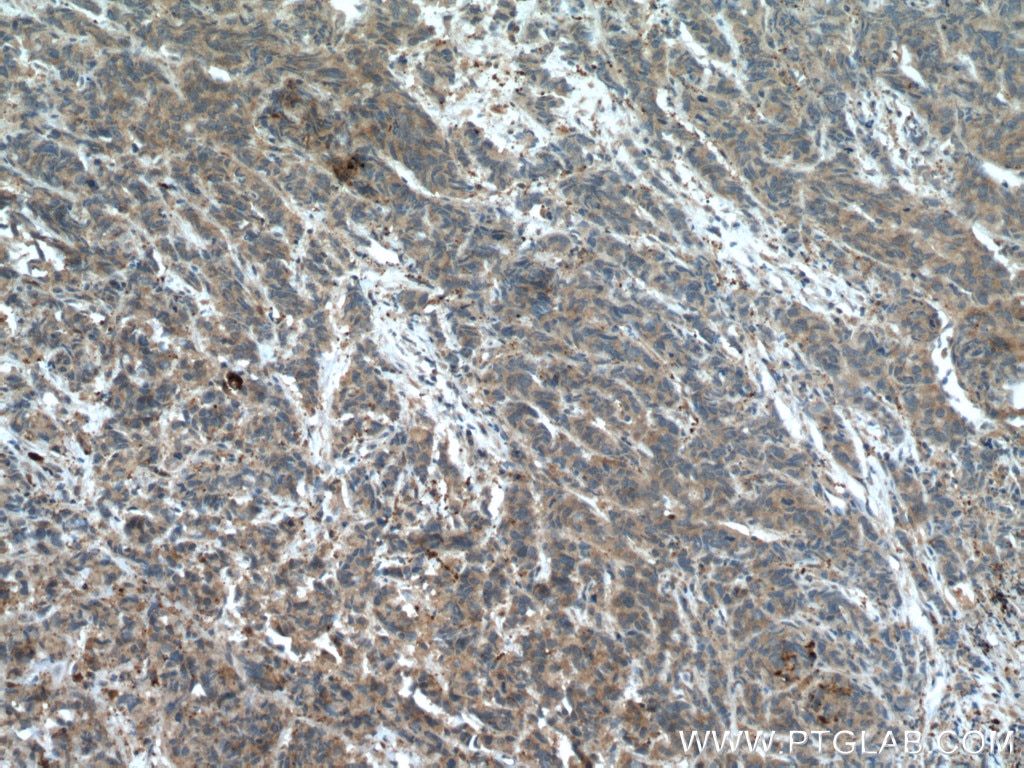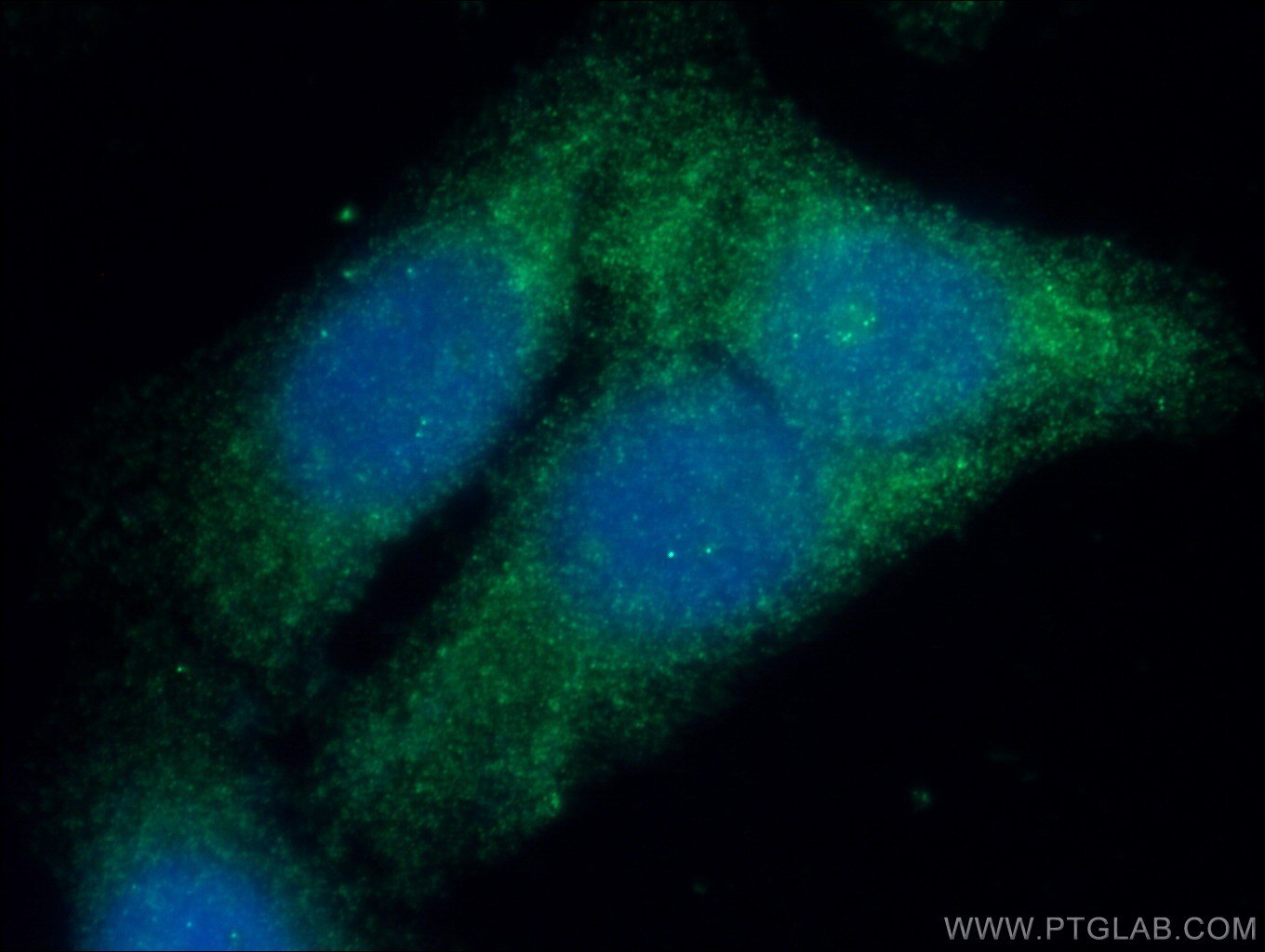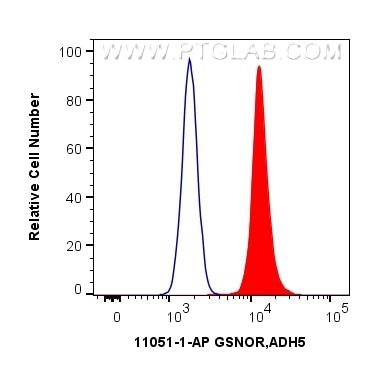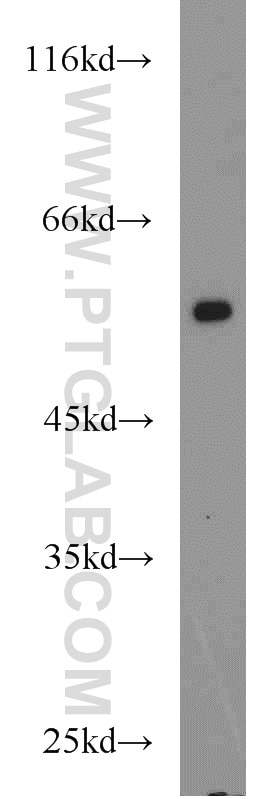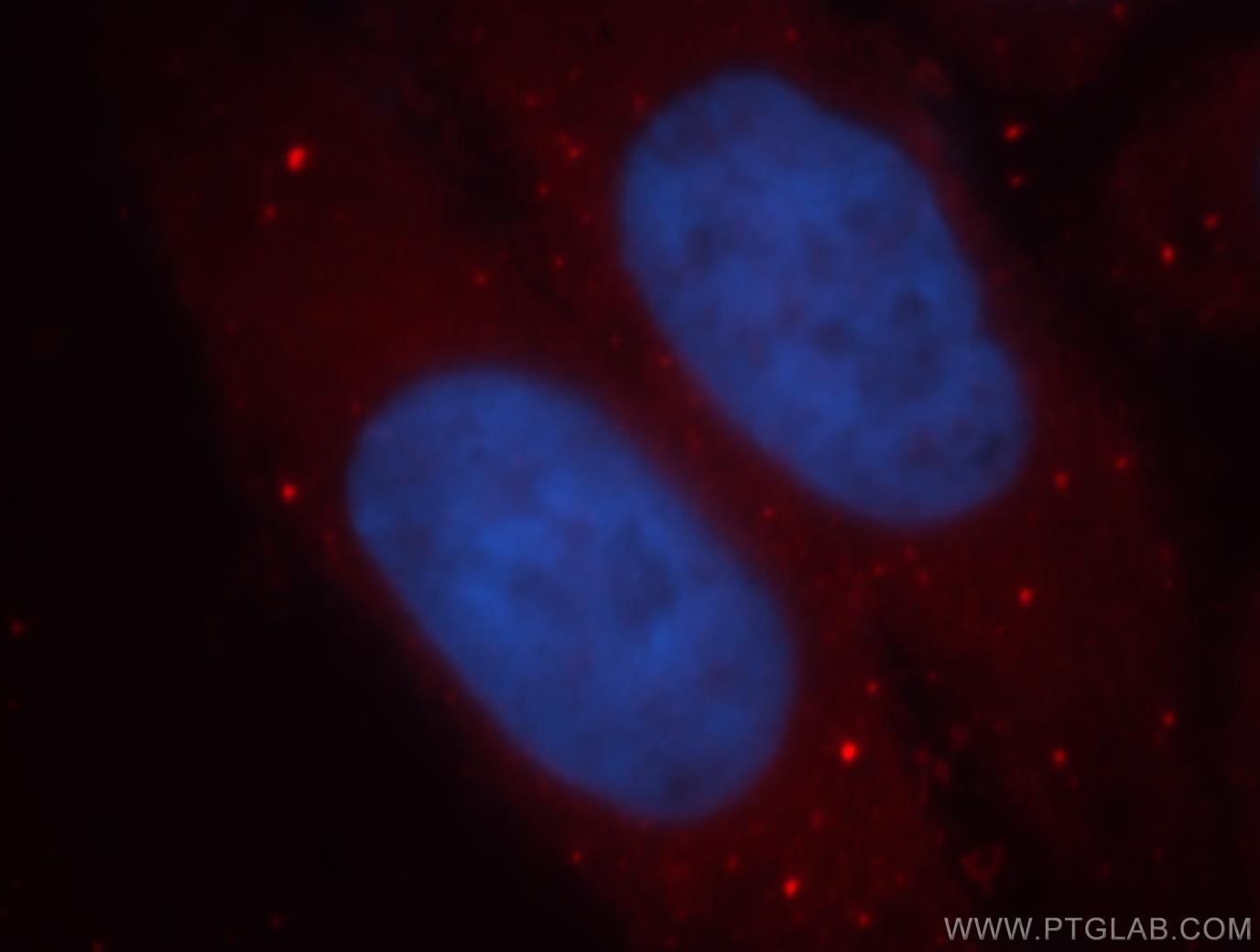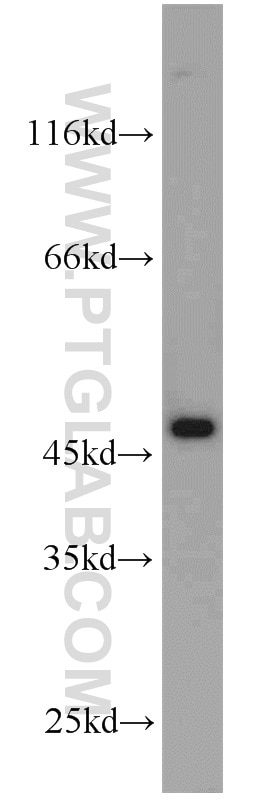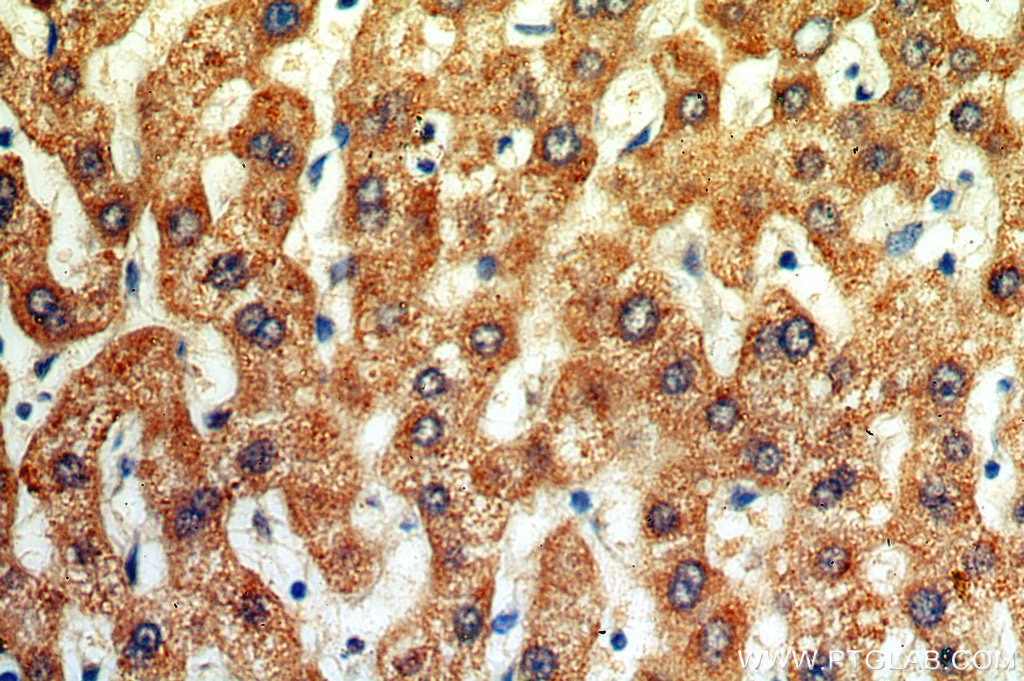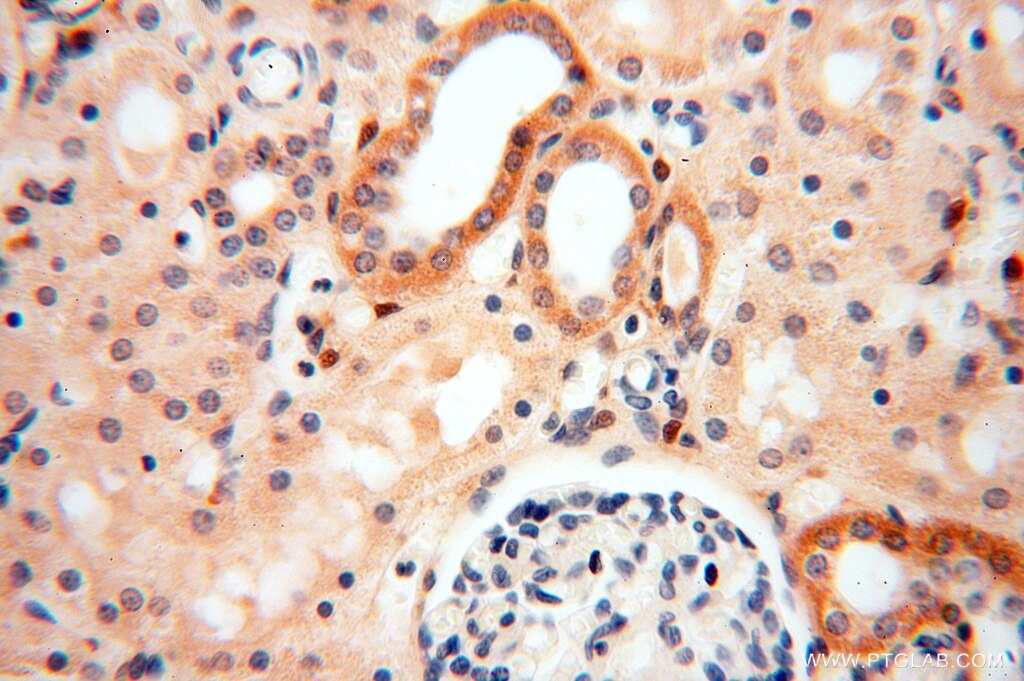- Phare
- Validé par KD/KO
Anticorps Polyclonal de lapin anti-GSNOR,ADH5
GSNOR,ADH5 Polyclonal Antibody for WB, IP, IF, IHC, ELISA, FC (Intra)
Hôte / Isotype
Lapin / IgG
Réactivité testée
Humain, rat, souris et plus (3)
Applications
WB, IHC, IF/ICC, FC (Intra), IP, ELISA
Conjugaison
Non conjugué
N° de cat : 11051-1-AP
Synonymes
Galerie de données de validation
Applications testées
| Résultats positifs en WB | tissu hépatique de souris, tissu hépatique de rat, tissu rénal de souris |
| Résultats positifs en IP | tissu hépatique de souris, |
| Résultats positifs en IHC | tissu de cancer de la prostate humain, il est suggéré de démasquer l'antigène avec un tampon de TE buffer pH 9.0; (*) À défaut, 'le démasquage de l'antigène peut être 'effectué avec un tampon citrate pH 6,0. |
| Résultats positifs en IF/ICC | cellules HepG2 |
| Résultats positifs en FC (Intra) | cellules K-562 |
| Résultats positifs en cytométrie | cellules K-562 |
Dilution recommandée
| Application | Dilution |
|---|---|
| Western Blot (WB) | WB : 1:1000-1:8000 |
| Immunoprécipitation (IP) | IP : 0.5-4.0 ug for 1.0-3.0 mg of total protein lysate |
| Immunohistochimie (IHC) | IHC : 1:50-1:500 |
| Immunofluorescence (IF)/ICC | IF/ICC : 1:50-1:500 |
| Flow Cytometry (FC) (INTRA) | FC (INTRA) : 0.40 ug per 10^6 cells in a 100 µl suspension |
| Flow Cytometry (FC) | FC : 0.40 ug per 10^6 cells in a 100 µl suspension |
| It is recommended that this reagent should be titrated in each testing system to obtain optimal results. | |
| Sample-dependent, check data in validation data gallery | |
Applications publiées
| KD/KO | See 9 publications below |
| WB | See 32 publications below |
| IHC | See 11 publications below |
| IF | See 6 publications below |
| IP | See 1 publications below |
Informations sur le produit
11051-1-AP cible GSNOR,ADH5 dans les applications de WB, IHC, IF/ICC, FC (Intra), IP, ELISA et montre une réactivité avec des échantillons Humain, rat, souris
| Réactivité | Humain, rat, souris |
| Réactivité citée | rat, Humain, poisson-zèbre, porc, poulet, souris |
| Hôte / Isotype | Lapin / IgG |
| Clonalité | Polyclonal |
| Type | Anticorps |
| Immunogène | GSNOR,ADH5 Protéine recombinante Ag1533 |
| Nom complet | alcohol dehydrogenase 5 (class III), chi polypeptide |
| Masse moléculaire calculée | 40 kDa |
| Poids moléculaire observé | 40 kDa |
| Numéro d’acquisition GenBank | BC070491 |
| Symbole du gène | ADH5 |
| Identification du gène (NCBI) | 128 |
| Conjugaison | Non conjugué |
| Forme | Liquide |
| Méthode de purification | Purification par affinité contre l'antigène |
| Tampon de stockage | PBS avec azoture de sodium à 0,02 % et glycérol à 50 % pH 7,3 |
| Conditions de stockage | Stocker à -20°C. Stable pendant un an après l'expédition. L'aliquotage n'est pas nécessaire pour le stockage à -20oC Les 20ul contiennent 0,1% de BSA. |
Informations générales
ADH5, also named as ADHX, FDH FALDH GSH-FDH ADH3 and GSNOR, belongs to the zinc-containing alcohol dehydrogenase family and Class-III subfamily. It is remarkably ineffective in oxidizing ethanol, but it readily catalyzes the oxidation of long-chain primary alcohols and the oxidation of S-(hydroxymethyl) glutathione. ADH5 mediates multiple cardiovascular functions. It plays in regulating heterocellular communication in the artery wall. (PMID:21071693). ADH5 immunostaining is distributed in both the nucleus and cytoplasm of the retinal ganglion cells(PMID:22117533).
Protocole
| Product Specific Protocols | |
|---|---|
| WB protocol for GSNOR,ADH5 antibody 11051-1-AP | Download protocol |
| IHC protocol for GSNOR,ADH5 antibody 11051-1-AP | Download protocol |
| IF protocol for GSNOR,ADH5 antibody 11051-1-AP | Download protocol |
| IP protocol for GSNOR,ADH5 antibody 11051-1-AP | Download protocol |
| Standard Protocols | |
|---|---|
| Click here to view our Standard Protocols |
Publications
| Species | Application | Title |
|---|---|---|
Blood Analysis of disease model iPSCs derived from patients with a novel Fanconi anemia-like IBMFS ADH5/ALDH2 deficiency.
| ||
Nat Commun Inducing multiple nicks promotes interhomolog homologous recombination to correct heterozygous mutations in somatic cells | ||
Mol Cell Two Aldehyde Clearance Systems Are Essential to Prevent Lethal Formaldehyde Accumulation in Mice and Humans.
| ||
Cancer Res S-nitrosylation of the Mitochondrial Chaperone TRAP1 Sensitizes Hepatocellular Carcinoma Cells to Inhibitors of Succinate Dehydrogenase.
| ||
Antioxid Redox Signal GSNOR deficiency enhances in situ skeletal muscle strength, fatigue resistance and RyR1 S-nitrosylation without impacting mitochondrial content and activity.
| ||
Redox Biol GSNOR modulates hyperhomocysteinemia-induced T cell activation and atherosclerosis by switching Akt S-nitrosylation to phosphorylation.
|
